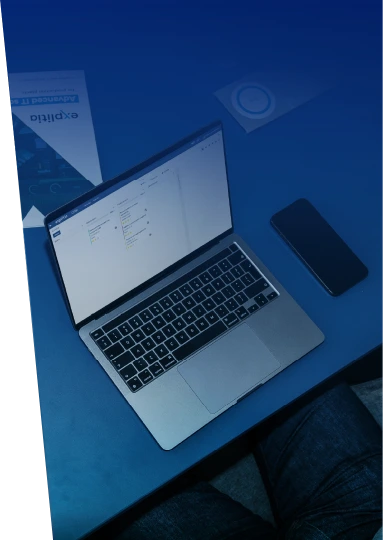In today’s rapidly evolving technological landscape, IT security has become one of the key challenges for businesses worldwide. Storing and processing information in the cloud, using mobile devices, and remote work create new opportunities, but at the same time, expose companies to a wide range of threats. Cybercriminals are becoming increasingly sophisticated, and hacking attacks can lead to serious consequences such as data theft, financial loss, or damage to a company’s reputation. In this article, we will explore the most important aspects of cybersecurity and present practical strategies to effectively safeguard your company’s data. Learn how to build a solid security infrastructure, which tools to implement, and how to educate employees to collectively face online threats.
The role of authorities in ensuring cybersecurity
Today, it is difficult to imagine how companies – including manufacturing plants – could operate without modern technologies. This is why state authorities have a responsibility to educate society about online security threats. Government information campaigns should raise public awareness of risks such as phishing, ransomware attacks and data theft. Awareness of threats, along with the ability to identify potential dangers and cybercrime attempts, forms the foundation of effective protection in cyberspace.

Cyber threats
Phishing: How to protect yourself from scams
One of the most common threats is phishing attacks, which aim to steal personal or financial data. An example could be an SMS with a fake notification about a package delivery and a request for payment via a link. Clicking on such a link can result not only in financial loss but also in infecting your device with malware, risking the leakage of sensitive information.
Strategies to protect against ransomware attacks
Frequent use of new technologies can increase resilience to cyberattacks. Employees familiar with IT security basics are less susceptible to fraud and better able to protect sensitive data. However, to achieve this level of awareness, it is essential to organize regular training for employees and invest in modern technological solutions that support network security.

Take care of IT security in your company
Managing IT security is not like organising a small gathering for three people. Get support from real experts!
Tools and Strategies for Protecting Company Data
IT Security – Education
Training employees in cybersecurity is one of the most important elements of prevention. Even in companies that do not rely on advanced IT systems, infecting a simple device can lead to serious consequences. Therefore, every organization should regularly conduct training to help employees understand how to avoid threats, how to act if a cyberattack is suspected, and what the company’s security policy is (e.g., using strong passwords).
In addition to education, implementing effective data protection tools is crucial. Companies often overlook simple yet effective solutions that can significantly enhance data security. For example, a balanced approach to the policy of using applications and websites on company equipment is essential. Overly restrictive blocks may push employees to seek alternative solutions, paradoxically increasing the risk of cybercrime. On the other hand, a too liberal approach may lead to unintentional breaches of data security.
Two-factor Authentication (2FA)
Two-factor authentication (2FA) is becoming a standard in many companies, as it significantly raises the security level of access to digital resources. Traditional login with a strong password is becoming less effective in the face of the growing number of cyberattacks such as phishing or brute force attacks. Introducing a second factor, such as an SMS code, authentication app, or biometrics, makes unauthorized access much more difficult.

Antivirus software as the first line of defense
Antivirus software is a basic element of a defense strategy against cyberattacks, protecting systems from malicious software, such as viruses. It helps detect and neutralize potential threats in real-time. Despite the increasing ingenuity of cybercriminals, basic security measures like antivirus software still play a crucial role in securing end devices.
Virtual Private Networks (VPN) as a safe remote access solution
Since the pandemic, many companies have adopted remote or hybrid work models. As a result, businesses must ensure secure remote access to corporate resources, protecting data transmitted between users and the network. Virtual Private Networks (VPN) are used for this purpose. By encrypting connections, VPNs create a secure tunnel, allowing employees to work remotely from any location without compromising data security. Additionally, using VPNs maintains privacy in public networks, such as Wi-Fi in cafes or airports.
Security Operations Center (SOC): Monitoring and responding to incidents
A Security Operations Center (SOC) is the key hub responsible for managing IT security within an organization. The main tasks of SOC include:
- Monitoring IT security.
- Detecting and identifying threats related to cybercrime.
- Responding to incidents.
- Post-incident analysis.
- Managing security risks.
SOC faces challenges such as the increasing number of security threats, a shortage of qualified personnel, and the need for rapid response. Nevertheless, SOC is an essential element of any modern organization’s cybersecurity strategy.
IT Security – Building systems
When building IT systems, the Explitia team places particular emphasis on cybersecurity aspects. Additionally, during system implementation, we provide knowledge and train employees on how to properly use the implemented solutions, as well as offer full technical support.
Raising employee awareness of threats
IT infrastructure is now the backbone of almost every business. When implementing a new IT system, it’s important to ensure optimal infrastructure. However, its protection cannot be solely a technological issue; regular employee training and information campaigns are equally important. Investing in cybersecurity education is an investment in the future and the stability of your business. Protect your data and minimize risks through conscious preventive actions.
Contact us
Do you want to move your production plant to level 4.0? Are you interested in modern solutions for industry in the field of automation and digitisation? Be sure to let us know!


